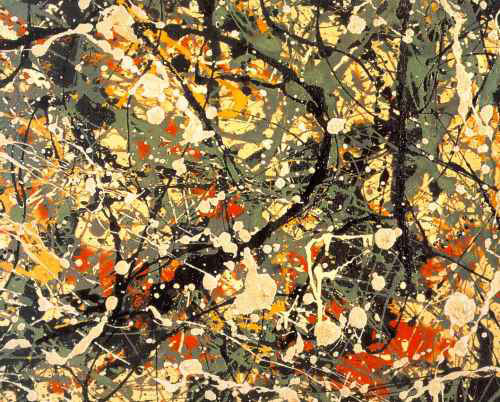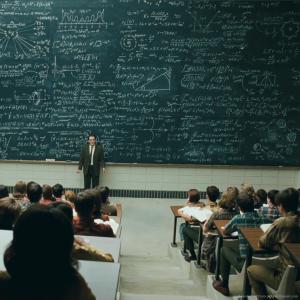
Modernism (Context #3)
The third reason (context) motivating a radical formulation of education reform is the "revolutions" that are a primary manifestation of the emergence of electracy. Electracy dates historically from the beginning of the industrial revolution in England, and includes the political revolution in France that brought the bourgeoisie to power (capitalism), and the revolution in representation transforming every discipline and order of knowledge. An overview history of modernism such as the one by William R. Everdell, The First Moderns: Profiles in the Origins of Twentieth-Century Thought, includes such chapters as: "Georg Cantor, Richard Dedekind, and Gottlob Frege: What Is a Number, 1872-1883;" "Georges Seurat: Divisionism, Cloisonnism, and Chronophotography, 1885;" "Santiago Ramón y Cajal: The Atoms of Brain, 1889;" "Valeriano Weyler y Nicolau: Inventing the Concentration Camp, 1896;" "Sigmund Freud: Time Repressed and Ever-Present;" "Hugo de Vries and Max Planck: The Gene and the Quantum, 1900;" "Bertrand Russell and Edmund Husserl: Phenomenology, Number, and the Fall of Logic, 1901;" "Edwin S. Porter: Parts at Sixteen per Second, 1903;" and numerous others (22 chapters), including on figures representing all the arts (Rimbaud, Picasso, Stravinsky and the like).
The unifying principle shared by all the domains in this revolution is a shift away from a metaphysics of substance (the basis of literacy) to one of relations: not reference to "things," but systems of "differences." "Representation" as a correlation and correspondence of a signifying order with a pre-existent reality is set aside ("obsoleted" McLuhan would say), and replaced with a reflexive review of "pure" system--the formal rules of logic or signification of the domain itself as an "artificial" construction or discourse. The break with "realism" or the constraints of verisimilitude (cultural assumptions, commonsense appearance) did not happen easily, of course (hence the association with "revolution"). A prototype in the sciences might be the invention of negative numbers (and even their square roots), which were "impossible" in the pre-modern paradigm of mathematics, but once introduced provisionally to work with problems resisting all other attempts at solution, they revealed the functional autonomy of the system.
Meanwhile, in Paris, a new space opened up that came to play the same role for electracy that the Academy in Athens played for literacy. That space was dubbed "bohemia," forming on the outskirts of the city proper, a liminal zone, inhabited by what Marx called the Lumpenproletariat, a mix of workers, the poor, students, artists, criminals, misfits of all sorts. Montmartre became the center of this scene, opening cabarets serving all the pleasures (vices) in the context of the new city form (wine, women, and song). The entertainment economy of the cabarets hosted the creation of avant-garde innovations in the arts, the break with the dominant traditions inherited from the Renaissance, culminating in Dadaism (in World War I Zurich). This fundamental historical analogy needs to be unpacked at length and in detail, of course, to develop the full potential of the Parisian cabaret (such as le Chat Noir, or the Lapin Agile) as the "academy" within which was invented the metaphysics (the logic, the operating system) of the emerging digital apparatus.
Share this
Comments

Pedagogy

The most immediate point for our purposes is to note that pedagogy and curriculum constitute a representational system whose referent is disciplinary knowledge. The question of adapting education to electracy is not so much about disciplinary knowledge itself (this knowledge already transformed, as noted in Everdell's history). Rather, this context calls attention to the fact that the representational system of school avoided the modernist revolution. School as an institution is inherently conservative, for various reasons, which no doubt accounts in part for this resistance. A shorthand version of what we are proposing, then, is to introduce into pedagogy and curriculum the inventions and innovations created in modernism, to put them to work reorganizing learning. The discovery of new wave knowledge was that "pure" or constructed orders of knowledge do in fact apply effectively to "reality," or perhaps transform what is real. Paul Klee is often quoted as saying that he did not render the visible, but rendered visible. A first step in at least one experimental reform of pedagogy would be to map the analogy of vanguard invention from "pure art" to "pure learning." What might pure learning be, and how would this new modality reengage with discipline knowledge and real world conditions?
